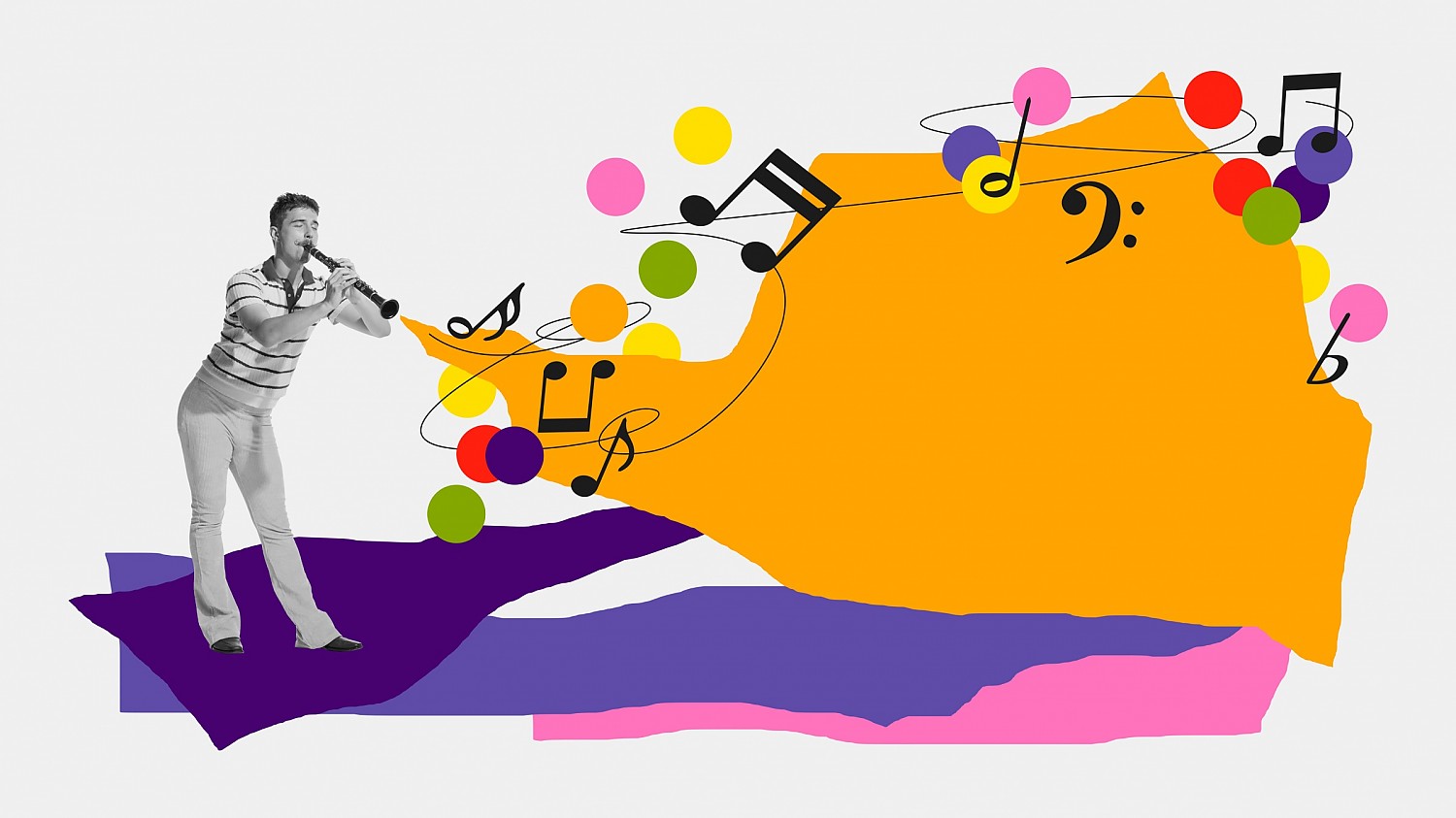In the work The Creative Act: A Way of Being by Rick Rubin, with Neil Strauss (2023), it is mentioned that the reality we experience does not exist objectively, but is constructed internally through complex chemical and electrical reactions in the brain. Rubin asserts that it is through this process that we create mental representations of environments, sounds, and meanings, to which we respond immediately, in a universe shaped by our subjective perception.
This concept is essential for understanding how creativity is not exclusive to the artistic realm, but rather a structural process present in various fields of knowledge and practice, including music and design. In this sense, the origin of creativity encompasses everything around us: all that we see, think, imagine, feel, and experience, as well as everything we articulate and what we safeguard within ourselves (Rubin, 2023). These fragments of memory navigate our unconscious until they surface through the act of creation.
Music and design, although they do not share the same language and the outcome of creation is a sonic composition and a visual one, both adhere to the same principles of creativity and seek to convey a message, emotion, or idea. In fact, the creative act unfolds in several phases—ideation, experimentation, elaboration, revision, and conclusion.
Composing music is the act of creating an organised sound work over time, where various rhythmic and sonic elements are explored. It is a process involving decisions related to harmony, melody, textures, and silence. Harmony sets the tone of the music—whether it is more joyful, melancholic, nostalgic, euphoric, or dreamy. Rhythm provides movement and, in combination with the played notes, can evoke specific sensations and feelings, guiding the listener's perception throughout the piece. Silence, depending on the author's intent, allows for the construction of tension, suspense, or calm—a breath.
Similarly, creating design involves organising visual elements in space, making decisions about layout, shape, colour, texture, typography, and negative space. Each of these components contributes to the construction of a visual message, influencing the perception and interpretation of the recipient. The arrangement of elements in space establishes visual hierarchies, proximity, and relationships that will affect the accessibility and understanding of the message. Shapes define the element and its identity, while colour is fundamental for representation and evocation of emotions, as well as for creating contrasts.
Just as in music, design utilises negative space and silence to allow the content to breathe, creating a moment of pause, balance, and emphasis of visual elements. In music, the hierarchy of content can be understood as the various layers of voices or instruments within the composition, with one always standing out—such as the melody, bass, or voice. The notion of layers is also common to both practices: in music, they enrich the sound; in design, they add visual depth, making the composition more engaging and dynamic (Safi, 2023). In both music and design, rhythmic or visual patterns provide greater cohesion, proximity or distance, identification, and perception of the message.
Both fields seek to find and construct balance and harmony. “In music, this may involve the use of dynamics and tempo to create a sense of flow and movement, while in design, it may involve the use of colour, contrast, and white space to create a sense of visual balance” (Safi, 2023).
Classic examples of the relationship and influence between music and visual arts include the Russian painter Wassily Kandinsky (1866-1944), a pioneer of abstract art, and the Russian composer Modest Mussorgsky (1839-1881), a central figure of the Romantic period and the nationalist movement in 19th-century Russian music.
Kandinsky drew inspiration from music to conceive abstract paintings, such as Composition VII, which function as “visual chords,” using colour and form to convey emotions, rhythms, and spirituality, reflecting the purity and abstraction of music (Ilg, 2015). Mussorgsky’s work Pictures at an Exhibition musically translates the pictorial elements of Viktor Hartmann's paintings, evoking through sound the images and visual atmospheres of the painter's works (Torres, 2021), establishing a close connection between sound design and the visual palette.
Thus, music offers design more than a structural metaphor. Music enhances and influences the creative process of design by stimulating critical thinking, sensory perception, and the ability to organise elements harmoniously and balanced.
References
Rubin, R., & Strauss, N. (2023). The creative act: A way of being. Penguin Random House.
Safi, H. (2023). The surprising connection between music production and design
Torres, R. (2021). Mussorgsky – Quadros de uma exposição – Análise. Arara Neon
Ulg, T. (2015). O espiritualismo e a musicalidade em Kandinsky. Revista Usina, 15
